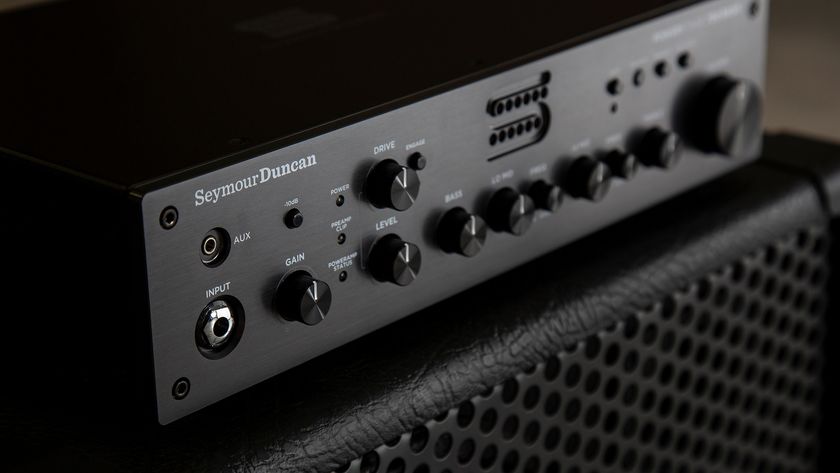The Lazy Eyes: “We buy each other pedals for birthday presents – our excuse is ‘we're getting more pedals for the band’, and then we use them ourselves!”
Guitarists Harvey Geraghty and Itay Shachar wax lyrical on the stompboxes that fuel the tones on their self-produced and self-recorded debut, SongBook

Young Sydney four-piece The Lazy Eyes could very easily end up becoming your favourite new psychedelic rock band. There’s a striking maturity to their self-produced and self-recorded debut album SongBook, which bears the mark of musicians with wisdom far beyond their years.
Drawing influence from the Australian indie/psych movement around them, with Tame Impala and King Gizzard And The Lizard Wizard leading the charge, there’s also a jam band mentality to The Lazy Eyes’ songs that harks back to The Beatles and the avant-garde ‘krautrock’ movement.
The music they make is hypnotic, with singer/guitarist Harvey Geraghty and fellow guitarist Itay Shachar kicking in some truly phenomenal modulations to spice up their hallucinatory tones...
There’s a song on your new album called Tangerine – could that be a reference to late '60s art-rockers Tangerine Dream, or perhaps loosely inspired by Beatles lyrics?
Geraghty: “Our bass player Leon [Karagic] is a big fan of krautrock. And yeah, he’s into loads of stuff like Tangerine Dream. These days we all tend to listen to a mix of older and newer artists, though you get to a point where you realise all modern acts are somehow influenced by The Beatles.
You listen to mixes of modern songs and every layer sounds like it’s on steroids
Harvey Geraghty
“All of Tame Impala’s guitars are Rickenbackers and Hofners. That’s pretty much the Beatles set-up! Maybe that helped them resonate with people, because those sounds were already somewhere in their own subconscious.”
Shachar: “I feel like we started this band as nerdy fanboys of the modern Australian scene – that’s what shaped our sound. We wore our influences on our sleeves a lot earlier on, playing Gizzard covers in school together, but then we started delving deeper into the older music that inspired them. If someone says they’re not a massive Beatles nerd, then they’re lying! Everybody loves The Beatles."
Get The Pick Newsletter
All the latest guitar news, interviews, lessons, reviews, deals and more, direct to your inbox!
So what’s the secret to capturing such authentic vintage tones with modern production tools?
Geraghty: “I don’t actually know. There’s a lot of people who ask us what gear we use, thinking it’s old tape machines. We don’t... we just record into Ableton. We don’t really try to make our music sound old. Maybe it’s the fact that we don’t know how to make it sound super good and modern?
“It’s a bit rough around the edges, with maybe more of an amateur production. You listen to mixes of modern songs and every layer sounds like it’s on steroids. Every guitar sounds like ‘the guitar of the universe’, every snare sounds like it’s been crafted from hours and hours of tweaking, which isn’t necessarily a good thing for music.”
Shachar: “I guess it’s that sense of bringing it back to the basics and not overproducing or making things sound too pristine or polished. It sounds crazy, but to make something sound good, it almost helps to make it sound a little less good!”
Tracks like The Seaside and Tangerine are coloured by moments of extreme modulation. What exactly are we hearing?
Geraghty: “We wanted to use phasers on tracks like The Seaside to portray the sea, like an audio effect that gives the impression of waves coming out of the ocean. Mine is a Pearl one – as in the drum company.
“It was made back in the '80s when every music brand decided to start making guitar pedals. I got it because I felt it could cover every kind of phaser sound I wanted. It has a lot of controls on top of the usual ‘depth’ and ‘rate’ – you can also widen the phase and choose what frequency the waves are. I can literally control the tide with my pedal!”
Shachar: “Honestly, our phasers are the most prized things in the rig! We both went on a big phaser hunt. That Pearl one is surprisingly versatile! Mine is the Maestro MP-1, it’s the big massive one you have to stomp your entire foot onto.”
The guitars on Hippo and Nobody Taught Me are quite effected too...
Shachar: “Yeah! Hippo is a weird one because both me and Harvey were using strong effects for both rhythm and lead parts. The lead is a chorus sound on a Korg multi-effects unit that we created. There’s an expression pedal that I use to ride the speed. And it’s the same tone I’m using on Nobody Taught Me, just without overdrive.”
Geraghty: “I was using my Z.Vex Instant Lo-Fi Junky, with the depth knob turned the whole way. You can turn the knob and it goes from really clean to something more like an old, scratchy vinyl.”
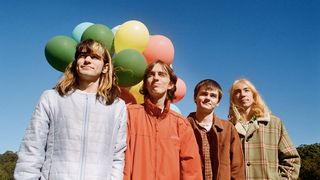
I was using a drive with a cocked wah for the solo on Where’s My Brain, and I feel terrible saying this, but it was one of those JOYO pedals which cost $20. They sound great, though!
Did you use any overdrive pedals or was that achieved only using amps?
Shachar: “I think I used a DOD drive pedal. Funnily enough, Harvey gave me that as a gift. We buy each other pedals as presents for birthdays. It’s our excuse, getting more pedals for ‘the band’ so we can use them ourselves!”
Geraghty: “It’s true! I was using a drive with a cocked wah for the solo on Where’s My Brain, and I feel terrible saying this, but it was one of those JOYO pedals which cost $20. They sound great, though! My neighbour gave me that pedal for free.”
And were there any delay or reverb pedals involved?
Geraghty: “I’ve got this Mr Black Supermoon reverb, which on top of my Instant Lo-Fi Junky, has even more warble on it. You can get pretty seasick with the Supermoon, though I did actually use it on Hippo. My delay is actually my first ever guitar pedal, the [DD-20] Giga Delay by Boss. You can do so much with that thing!”
Shachar: “I have a reverb on my board that also does a lot of the swells. There’s the trail and then it really blooms. You can hear it on Intro, it’s called the Météore and is made by Caroline [Guitar Company]. I don’t actually use any delay, though there is this stutter effect that I use in a glitchy way – you could kinda say it’s a delay of sorts, but not in the classic sense.”
Speaking of Intro, that definitely feels like the big guitar hero moment on the record.
Shachar: “Thanks for noticing! I’m not into overly indulgent guitar playing. I don’t really have any guitar heroes, to be honest. That song just came through the melody and slowly we all realised it would be a guitar solo. That happened three times on the album, because there are instrumentals. That tone came from the Korg multi-effects unit and it’s another preset I made up completely randomly.”
Geraghty: “We just like to have a lot of fun with our guitars, that’s our approach. But we’re never using guitars just for the sake of it. We made most of the album in layers, not really as a band.
“The instrumentals were done as a band, but for the rest we started with the drums and then just started layering on top. A lot of the solos were originally melodies that started from more of a vocal kind of place. They’re not very guitar-centric, in that sense. The guitar’s just a really good platform and colourful way for us to express ideas.”
- Songbook is out now.
Amit has been writing for titles like Total Guitar, MusicRadar and Guitar World for over a decade and counts Richie Kotzen, Guthrie Govan and Jeff Beck among his primary influences as a guitar player. He's worked for magazines like Kerrang!, Metal Hammer, Classic Rock, Prog, Record Collector, Planet Rock, Rhythm and Bass Player, as well as newspapers like Metro and The Independent, interviewing everyone from Ozzy Osbourne and Lemmy to Slash and Jimmy Page, and once even traded solos with a member of Slayer on a track released internationally. As a session guitarist, he's played alongside members of Judas Priest and Uriah Heep in London ensemble Metalworks, as well as handled lead guitars for legends like Glen Matlock (Sex Pistols, The Faces) and Stu Hamm (Steve Vai, Joe Satriani, G3).
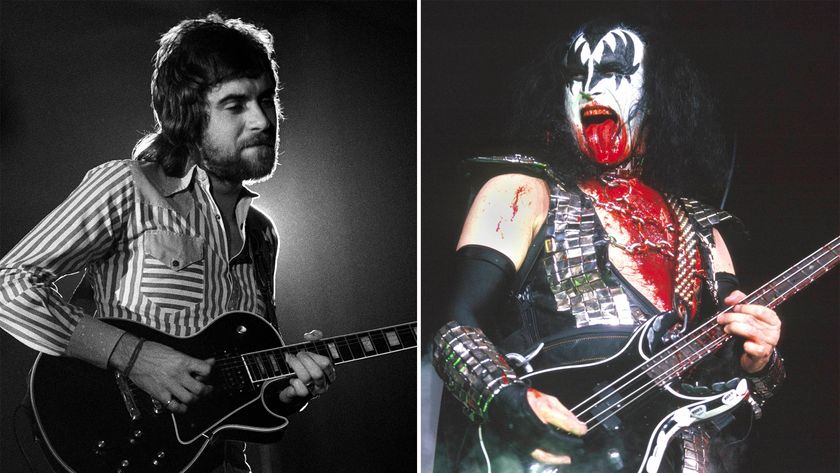
“I had to use the same microphone that Gene Simmons used with all the blood coming out of his mouth. Can you imagine that!” Mick Rogers recalls Kiss supporting Manfred Mann's Earth Band in their early days

“Once Dave got his Roland Space Echo, it changed the vibe… that, and a lot of marijuana”: They inspired everyone from Oasis to the Smashing Pumpkins. Now English post-punk luminaries the Chameleons are back for more

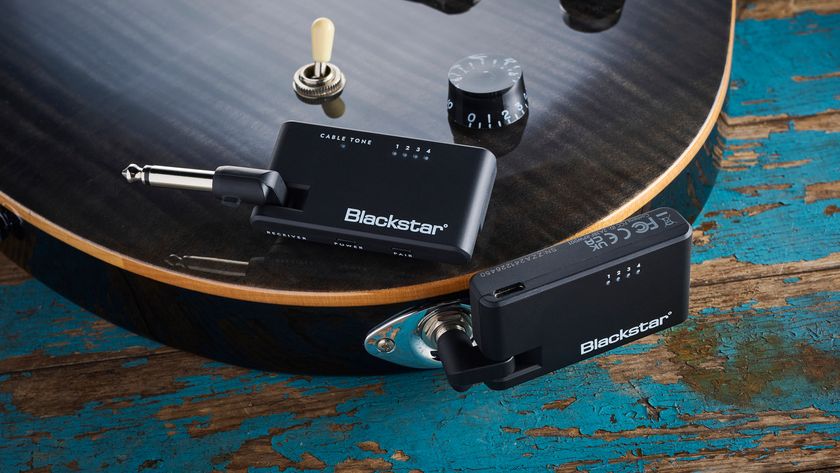
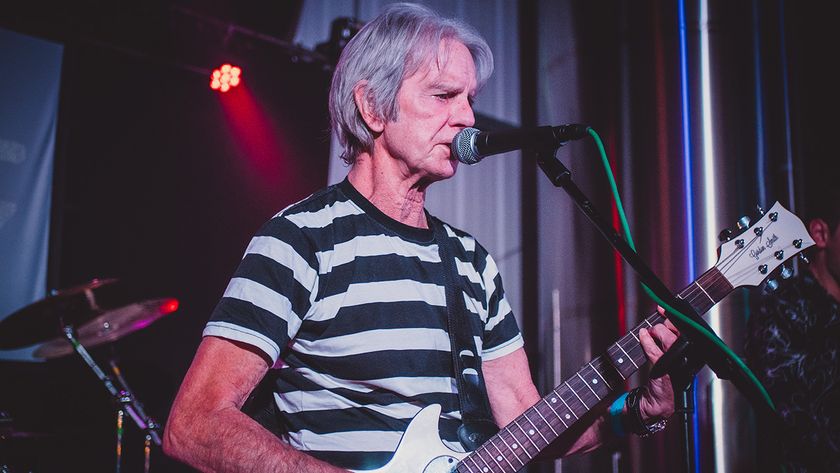
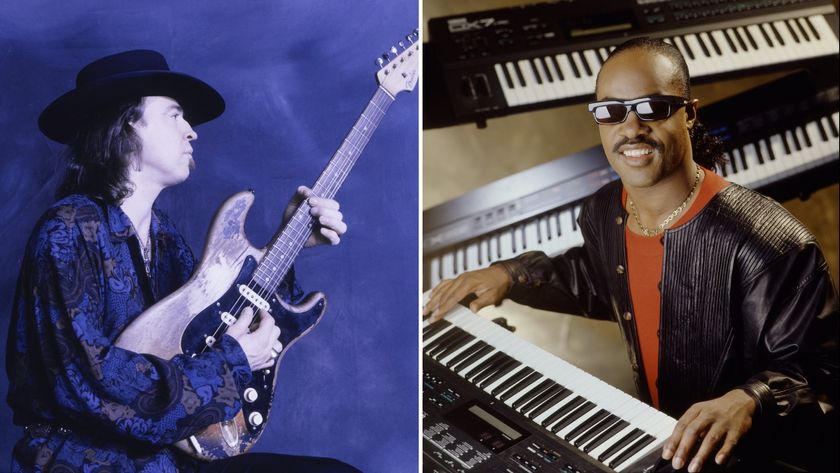
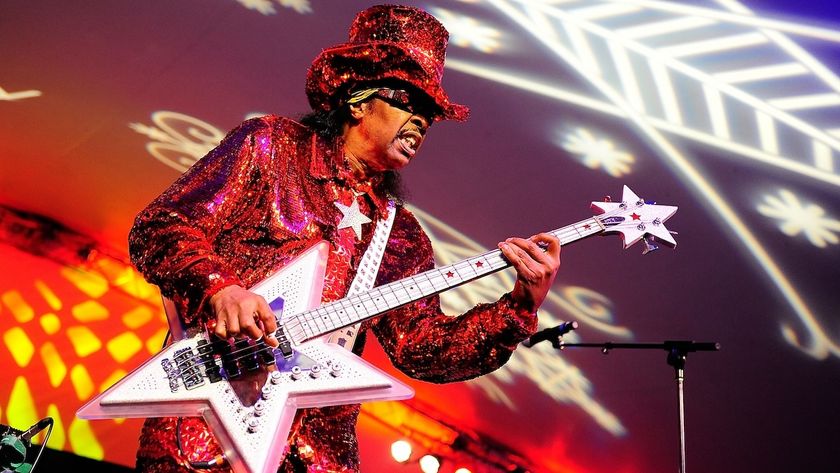


![[L-R] George Harrison, Aashish Khan and John Barham collaborate in the studio](https://cdn.mos.cms.futurecdn.net/VANJajEM56nLiJATg4P5Po-840-80.jpg)
